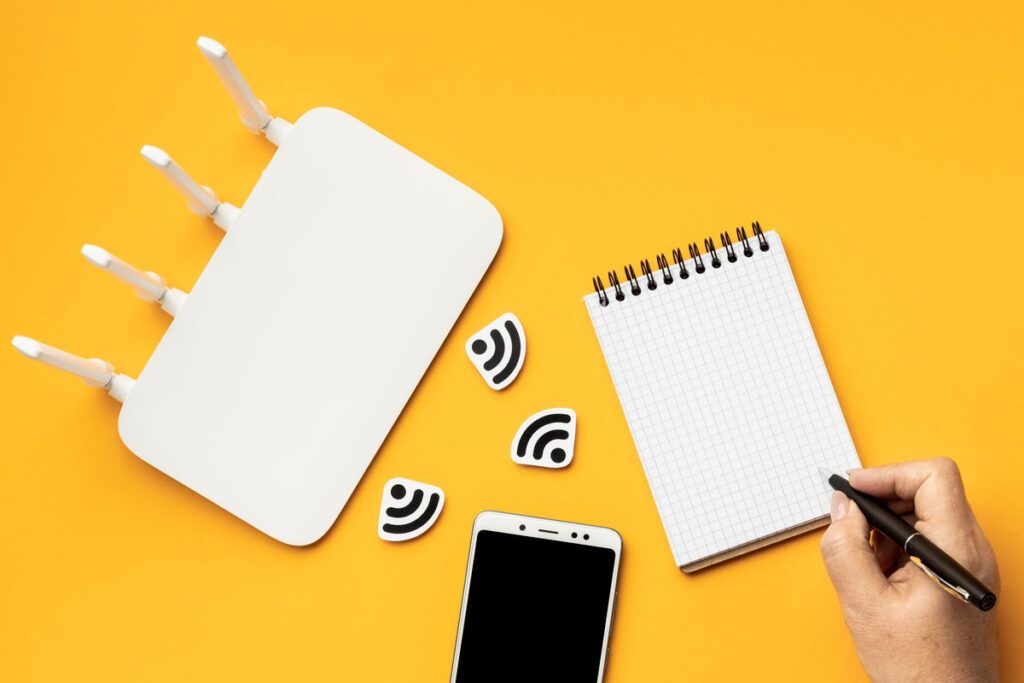Wi-Fi and cellular data are two main ways of accessing the internet. They both have their pros and cons, but many people mistake one for the other. This article will explain the key differences between Wi-Fi and cellular data, so you can make sure your device is set up to get the best service possible.
What is Wi‑Fi?
Most people know that Wi-Fi is a wireless signal that allows devices to connect to the internet without using cables. However, there is often confusion about what exactly Wi-Fi is and how it works.
Wi-Fi is actually short for Wireless Fidelity. It’s a type of wireless networking technology that uses radio waves to provide high-speed internet access. When you connect to a Wi-Fi network, your device sends and receives data through the airwaves.
One of the great things about Wi-Fi is that it’s relatively easy to set up. All you need is a router and an internet connection. Once your router is connected to the internet, any device within its range can connect to the internet wirelessly.
Wi-Fi networks are becoming increasingly common, which means you’re likely to encounter them more and more often. Knowing how Wi-Fi works can help you make the most of this convenient technology.
What is cellular data?
Cellular data is the data that you receive and send through your cell phone carrier. This data can be used for things like browsing the internet, sending texts and emails, and downloading apps. Wi-Fi data is the data that you receive and send through a Wi-Fi connection. This data can be used for things like browsing the internet, sending texts and emails, and downloading apps.
Which should you choose and why?
When it comes to data usage, there are two main types of data: Wi-Fi and cellular. So, which one should you use? Here’s a look at the differences between Wi-Fi and cellular data, as well as some tips on how to manage your data usage.
Wi-Fi data is transmitted wirelessly via a router or other access point. Cellular data, on the other hand, is transmitted over a cellular network.
One of the biggest advantages of Wi-Fi data is that it’s typically free. Many public places, such as coffee shops and libraries, offer free Wi-Fi for customers or patrons. Even if you’re not in a public place, you may be able to get free Wi-Fi from your home router if it’s open to the public (which is usually not the case for security reasons).
Cellular data, on the other hand, costs money. Unless you have an unlimited data plan, you’ll have to pay for every bit of cellular data that you use. This can add up quickly, especially if you’re streaming video or music over a cellular connection.
Another advantage of Wi-Fi data is that it’s generally faster than cellular data. This
When is it better to use Wi‑Fi vs. Cellular Data?
There are a few key differences between Wi-Fi and cellular data that can help you decide which is best to use in different situations. Here are some general guidelines:
-If you need a fast, reliable connection: Choose Wi-Fi. Because Wi-Fi connections are typically more stable than cellular data connections, they’re better for activities that require a lot of data or a consistent connection, like streaming video or music, downloading files, or video chatting.
-If you need to conserve data: Choose cellular data. With most cell phone plans, you have a limited amount of data to use each month. So if you’re trying to stay within your data limit, it’s better to use a cellular connection rather than Wi-Fi.
-If you’re traveling: Choose Wi-Fi. Roaming charges for using cellular data abroad can be very expensive. So if you’re traveling outside of your home country, it’s better to connect to Wi-Fi whenever possible. We recommend a dedicated server from a full-fiber-occupied data center.



